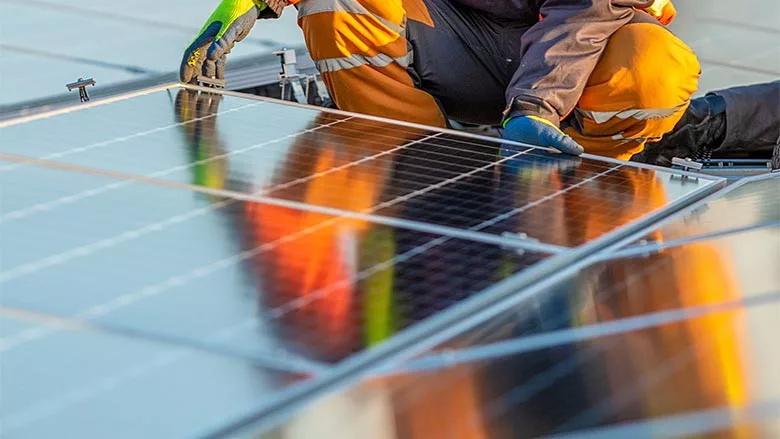GUEST EDITORIAL
Ross Goldstein: Design your system for the ‘what ifs’
Learning from your mistakes.

Tsvetan Ivanov/iStock / Getty Images Plus via Getty Images
A lot of things are out of your control when working on a job involving multiple trades. Whenever I design any type of system, I always go down a list of “what ifs.” The “what ifs” are scenarios that can affect the performance of a system due to an unknown. This includes actions by other trades.
A great example is one of the first solar thermal installations we performed at a small market that sold and prepared meals grown by the local college — this college had a strong agriculture and farming program.
Like many jobs, you are given a set of plans to follow. Unfortunately, the engineer did not specify the fittings to be used, only the average water temperature required. In this case, the temperature range was 145° to 150° F. Based on Btu requirements, the average run time of the system and maximum temperature the solar panels were designed for, I thought that selecting the proper fittings would be an easy task. At the time this job was being completed, there were not as many choices as on connections as there are today. The fittings I selected were rated for 200° F.
The original prints stated the job was scheduled to start in September — a great time to install solar thermal because the sun would not heat the panels up to the point where they could not be properly handled. It also meant that my installers were not working during the hottest time of the year.
However, after being awarded the job, I was told by the GC that the college wanted to open the store in time for the start of the school year. That meant the job would have to be performed in the hot and humid summer. That experience taught me several things.
First of all, I learned if the job conditions change, I should have put in a change order to account for the additional time the job would take due to the heat. It’s important to take into account manpower issues that could arise. This project would now have to be done in the middle of the cooling season, and I would not be able to fully staff the job. My company is a full mechanical, the largest portion of our work is generated by commercial service agreements and summer-winter unit swap-outs.
“As companies and governments at all levels continue looking for ways to reduce carbon pollution, I believe solar thermal will make a comeback.”
Next, I learned that I should create a backup plan, such as asking another contractor I was friendly with to lend you a technician, if required. Because solar thermal has a lot of piping involved, a plumbing technician would have been perfect. Additionally, when updating the job schedule, you need to ensure it works with the rest of the companies involved and their obligations, as well as your supplier’s ability to provide the supplies required.
If I had done this, I would have become aware that we just picked up a few large maintenance contracts that required several chillers and rooftop units to be replaced. In turn I would have politely turned the job down. But this was not the case. The reality was I could have all the piping required, but the original fittings I planned to use were back-ordered. After calling several other supply houses, I discovered none of them had the fittings I wanted. The available option was to use fittings capable of handling 180° F water.
From the start of the job, it became obvious the GC did not understand solar thermal. They were also in such a rush to get the store ready before September that they closed off the original route I was going to use for my piping. My team ended up installing the piping outside, situated close to where the walls met the roof. The job time was also doubled due to a lack of fitters trained to do solar thermal. We were almost complete when the GC told us that electricians were coming over the weekend to provide power to the system. I explained I would not be able to have any one there to ensure that they hooked the power up correctly and to set the safeties on the controls so the glycol-water mixture installed would not overheat.
The GC told us that he would push the electricians back until next week.
Something told me that I should have gone to the site over the weekend to check up on things. Communication had become mixed up and the electricians wired up the system. This would have been fine; except they also turned the system on.
With the system on, but no control system operating with the temperature outside in the 90s hot water shortly turned to steam. The result was every fitting burst, and the GC tried to blame the issue on my firm.
What I will say is that solar thermal is a great solution for many projects when done properly. As companies and governments at all levels continue looking for ways to reduce carbon pollution, I believe solar thermal will make a comeback.
Solar thermal, if done properly, is ideal for:
- Domestic and comfort heat;
- Steam for production;
- Comfort cooling using absorption chillers and specially designed comfort cooling; and
Dehumidification for fresh air systems.
My goal with this column is to introduce solar thermal to a new generation of contractors and educate on how it can be used to reduce carbon emissions. I also want to introduce the latest technology from around the world, and lastly help you learn from the mistakes I made when I founded this division for my company about 20 years ago.
Looking for a reprint of this article?
From high-res PDFs to custom plaques, order your copy today!








